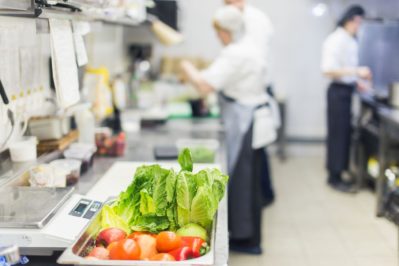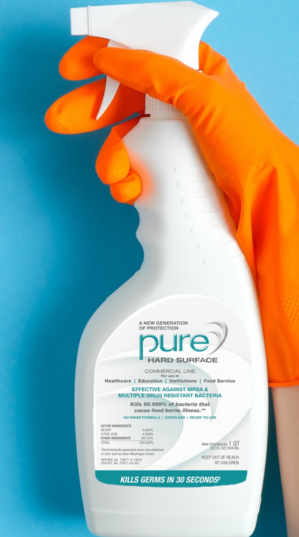How to Keep Food Preparation Surfaces Clean

Foodborne illnesses sicken one in six Americans and kill about 3,000 annually, according to FoodSafety.gov.1 The most common causes of food poisoning are bacteria, viruses, parasites, and mold or other natural toxins, all extremely prevalent in the environment. Therefore, it is essential to know how to keep food preparation surfaces clean.
Why Is It Important to Prioritize Clean Food Prep Areas?
Symptoms of food poisoning can be mild to severe and may include upset stomach, cramps, nausea, vomiting, diarrhea, fever, and dehydration. Some types of food poisoning can even have long-term effects such as kidney failure, brain/nerve damage, and chronic arthritis.
Bacteria and other pathogens that can contaminate food are everywhere. They’re present where you store food and certainly in areas where it is prepared. Kitchen counters, utensils, floors, appliances, and your hands have more contaminants than you realize. An unknown number of people can be affected if food prep areas aren’t properly cleaned and sanitized.
Tips for Keeping Food Prep Areas Clean
Food poisoning can be prevented by ensuring food preparation areas are clean before any ingredients are handled. Here are the best steps to include in your routine and protect yourself, your staff, and anyone likely to consume prepared foods:
Make Sure People at Workstations Are Clean
Germs live on many surfaces. The first place to start is your hands, where germs can thrive and be spread from one place to another. Before, during, and after food preparation, you should wash your hands with soap and water for at least 20 seconds. After a final rinse, dry your hands with a clean towel.
Hand washing should be done not only before, during, or after preparing food, but also before eating and after:
- Handling any raw food product (meat, poultry, seafood, or eggs)
- Using the toilet
- Touching an animal, their feed, or waste
- Changing diapers or cleaning a child
- Touching garbage
- Blowing your nose, sneezing, or coughing
- Treating a cut or wound
- Caring for anyone who is sick
It’s also important to wash cutting boards, countertops, and other surfaces you use with hot, soapy water. Dishes and utensils must also be thoroughly cleaned after each use. To wash a dish cloth, put it in the washing machine and run it on the hot cycle.
Clean Then Sanitize
Cleaning and sanitizing are two different things. The first step should be to clean kitchen surfaces with warm, soapy water. Single-use products, such as paper towels, are best for drying. Cleaning helps remove dirt, grime, and bacteria but doesn’t kill it.
Sanitizing is the step that kills remaining bacteria. It involves pouring or spraying a sanitizing solution on food prep surfaces. Each surface must then be wiped clean with a paper towel. If you use a commercial sanitizer, be sure to follow the manufacturer’s instructions.
Don’t Mix Ingredients

If you prepare raw meat or poultry, seafood, or eggs with foods that are ready to eat, cross-contamination can occur. Always use separate cutting boards and plates for uncooked items. If any surfaces do come in contact with raw items, clean and sanitize them before preparing anything else. Thoroughly wash any plate or utensil that has touched raw items as well, using hot, soapy water.
Use Proper Cleaning Products
Always use a cleaning product that is labeled for use with food preparation surfaces and the material they’re made of, such as steel, wood, ceramic, stone, etc. If a cleaning product isn’t available, you can mix one tablespoon of liquid chlorine bleach per gallon of water. Pouring or spraying this solution and wiping the surface with a paper towel can do the job. There are also many kinds of commercial disinfecting sprays and disinfecting wipes.
Use Sanitized Towels with Specific Purposes
Prudential Overall Supply not only sells hard surface disinfectants, food service sanitizers, and other products, but also towels for specific applications. These include super-absorbent, cotton dish towels, glass towels, and our microfiber towels. Our microfiber products can absorb up to 10 times their weight in water, while the angled edges of the tiny fibers attract dirt to keep food preparation surfaces clean and unscratched.
Order food-prep-surface and related products from Prudential Overall Supply, or contact us today for assistance at 800-767-5536.
Source: